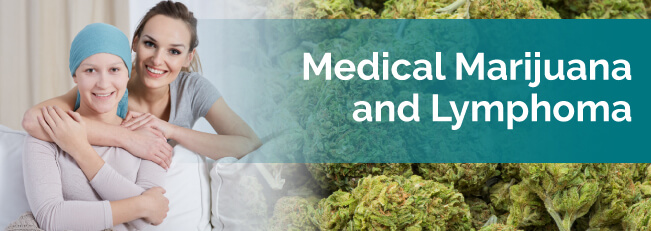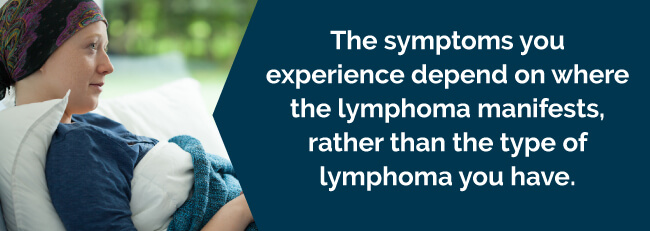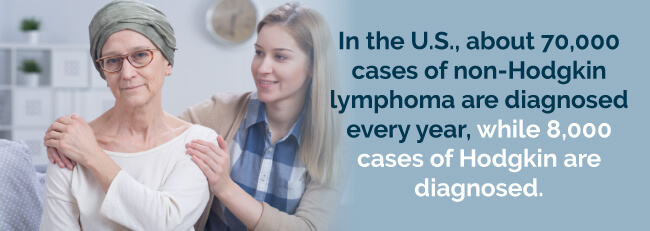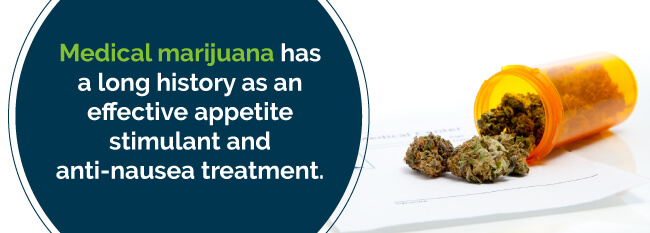
Like other types of cancer, lymphoma is a life-changing disorder. Not only does it come with the risks and symptoms of other cancers, but it also directly affects your immunity, making you susceptible to other diseases.
Because this disease can be so debilitating, it’s understandable that you want to know all your treatment options. After all, the existing methods we have can put your body through extreme levels of stress. Finding a way to take the edge off your symptoms and side effects could be a total game-changer.
Medical marijuana could make the fight against lymphoma easier for you. Let’s talk about cannabis and lymphoma.
Many cancer types have very straightforward names — for instance, breast cancer occurs in the breasts and lung cancer occurs in the lungs. But if you don’t have it yourself, the name “lymphoma” might confuse you. We’ll break it down for you.
Lymphoma is a type of cancer that affects the lymph system, a part of your immune system. The lymph system releases white blood cells called lymphocytes that produce antibodies. When you have cancer, your body fails to kill off extra cells, which start to spread and damage the body.
You can find lymph tissue in many areas of the body. These include the lymph nodes, bone marrow and the spleen. Lymphoma can affect any of these areas, like the lymph tissue near your brain or in your skin.
There are two categories of lymphoma based on whether your cancer tissue contains Reed-Steinberg cells. Reed-Steinberg cells are mutated white blood cells that are up to five times larger than healthy lymphocytes.
Hodgkin lymphoma usually begins in the underarms, neck or chests. It then progresses to the closest set of lymph nodes, making it easy to diagnose in earlier stages. However, Hodgkin lymphoma appears less often than non-Hodgkin lymphoma does.
Non-Hodgkin lymphoma is much harder to diagnose early on, and doctors have a more difficult time predicting where it will spread next. Because of this, patients with non-Hodgkin lymphoma tend to get a diagnosis in more advanced stages of the disease. Depending on the subtype of non-Hodgkin lymphoma the patient has, it can have a lower or equal survival rate to Hodgkin lymphoma.
The symptoms you experience depend on where the lymphoma manifests, rather than the type of lymphoma you have. Since lymphoma often causes the lymph nodes to swell, the resulting pressure on the surrounding organs can cause issues.

If you find a swollen lymph node on your body, you should talk with a doctor. Your lymph nodes are located in areas like your neck, armpits and groin. Other diseases and cancers can result in swollen lymph nodes, so it’s very important to get them checked, even if you don’t get a lymphoma diagnosis.
Swollen lymph nodes in the chest can put pressure on your windpipe, resulting in respiratory issues. These issues include coughing, trouble breathing and chest pain.
When a lymph node in the abdomen swells, it can push against your stomach or intestines. The pressure makes you feel nauseous and lower your appetite. It also can make you feel pain in that area.
Lymphoma in the lymph tissue in your brain or skin can also result in unpleasant symptoms. When you have lymphoma in your brain or spinal cord, you can have personality changes, seizures, numbness and other cognitive problems. Skin lymphoma can be visible or easy to feel and tend to be itchy and red.
Lymphoma also causes other symptoms typically found in any kind of cancer. Typical cancer symptoms include rapid weight loss, fatigue, chronic pain and fever.


Lymphoma has a large variety of treatments, but chemotherapy and radiation therapy are the two most well-known ones. Alternatively, you can try lesser-known treatments like immunotherapy and stem cell transplants.
Although radiation and chemotherapy may be effective treatments for lymphoma suffers, both come with serious negative side-effects. Along with hair loss and other unpleasant side-effects of radiation and chemotherapy, extreme fatigue, nausea and vomiting often accompany radiation and chemotherapy. Extreme weight loss may result as the patient simply cannot hold down food.
This creates another problem — a lymphoma sufferer needs all the strength he or she can get, yet the treatment itself often causes weakness because the patient is not getting enough vitamins and nutrients from eating.
Cancer is such a deadly disease in large part because cancer cells are rapidly dividing cells, allowing the disease to spread quickly through the body. Chemotherapy works by delivering a drug cocktail into the patient’s body that kills the rapidly dividing cancer cells.
The problem is that cancer cells are not the only rapidly dividing cells within the human body. Other places in the body where rapidly dividing cells can be found include hair follicles, bone marrow and the digestive tract.
As a result, one of the most common side-effects of chemotherapy is the inflammation of the digestive tract which results in the inability to keep food down. Radiation therapy has some nasty side-effects as well, most notably extreme fatigue, nausea and vomiting for days, or even weeks, after treatment.
Immunotherapy kick-starts your immune system to make it work better or adds new components to your immune system. It is often administered using an IV, so you must make regular appointments to continue the process.
To treat non-Hodgkin lymphoma, doctors will often use monoclonal antibodies, or man-made antibodies created to target a specific type of cell. But some are now used to treat Hodgkin lymphoma as well.
Treatments that boost the immune system include interferon and immunomodulating drugs. While interferon is naturally produced by white blood cells, immunomodulating drugs are completely man-made.
Since immunotherapy changes the immune system, it can lead to side effects caused by a difference in immunity or healthy cells being attacked by the immune system. Non-dangerous side effects include digestive issues, cough, nausea, fatigue and fever. In extreme cases, immunotherapy can cause life-threatening side effects that you should immediately report to your physician.
Rarely, your doctor will give you a stem cell transplant. This sometimes happen when you are in remission or have a relapse. This method of treatment is slowly growing in popularity as we learn more about it.
We classify the two kinds of stem cell transplants based on the source of the stem cells. Autologous stem cell transplants involve preserving some of the patient’s own stem cells and reintroducing them after intense chemotherapy or radiation therapy. Allogenic stem cell transplants happen similarly, except the stem cells come from another person.
Stem cell transplants can lead to side effects as your body is adapting to the new stem cells. Your body will be much more susceptible to infection. Plus, you can’t make platelets in your blood when you first have the new cells, so you need to avoid injury that causes bleeding.
In the case that your body rejects the new stem cells, you can also face some life-threatening problems. Since the patient’s immune system must be suppressed before the transplant, this can lead to the foreign stem cells attacking your organs. If the stem cells don’t fuse into your bone marrow and multiply, the patient will have issues with bleeding and infection.
Medical marijuana has a long history as an effective appetite stimulant and anti-nausea treatment. In addition, recent research has shown that medical marijuana has significant anti-inflammatory qualities as well, making medical marijuana an excellent addition to any lymphoma treatment regime.

Of all the recent research done on the use of medical marijuana, some of the strongest results have been obtained on cancer patient research. While there is rarely ever complete consensus among the medical community, there is widely held agreement that medical marijuana does work to stimulate the appetite as well as reduce the nausea and vomiting that often accompanies treatment for lymphoma.
One way that medical marijuana helps lymphoma patients who are going through chemotherapy is through the anti-inflammatory properties found in marijuana. Along with other important chemical properties, Cannabidiol, or CBD, is a major component found in medical marijuana. Many clinical studies indicate that CBD can relieve anxiety, seizures, inflammation and nausea.
Studies have even shown that CBD may inhibit the growth of some cancer cells, making medical marijuana not only a beneficial drug to counteract the side-effects of chemotherapy and radiation treatment, but also a potential first line defense against the cells that cause lymphoma.
In 2005, researchers examined the effects of cannabinoid receptor activation on mantle cell lymphoma (MCL). The team conducted previous research on the expression of cannabinoid receptors in MCL cells, where they learned MCL had more expression than healthy cells. To expand on this finding, they wanted to see how activating cannabinoid receptors in MCL affected it.
Both cannabinoids that activate the CB1 receptor and cannabinoids that activate the CB2 receptor decreased MCL’s viability. However, this study also showed that a CB1 antagonist could help kill MCL cells. When the team used both an antagonist and a CB1-receptive cannabinoid, they worked together for a greater effect. Oddly enough, this phenomenon didn’t happen with breast cancer cells.
Many of the members of the previous study’s team also worked on a study of non-Hodgkin lymphoma. While they already knew MCL had more cannabinoid receptor expression, they didn’t know if non-Hodgkin lymphoma did. So, they examined the cannabinoid receptors in non-Hodgkin lymphoma B cells.
Most of the samples they analyzed had more receptors than typical lymph node tissue. The samples had varying levels of expression, but none of them completely lacked it. When considering their findings in the context of other studies, the team concluded that cannabinoid receptors could be vital in treating cancers like lymphoma.
As you can tell from the evidence, marijuana serves as a versatile medical aid for cancer patients. The general symptoms of cancer often appear as qualifying conditions for states that legalize medical marijuana.
For instance, a symptom resulting from both cancer and its treatments is nausea. It turns out that many legal states consider severe nausea as a health problem suitable for cannabis use. We even have synthetic cannabinoids out there used for antiemetic purposes, so even federal authorities understand marijuana’s potential.
When you use medical marijuana for lymphoma and related health issues, however, you should keep a few things in mind:
Smoking isn’t the only way to consume medical marijuana. Both recreational and medical users of cannabis have engineered multiple ways to use weed that suit every patient’s preference. Keep in mind the kind of effect each method provides.
To figure out the best option for you, talk with the experts at your dispensary or consult with your doctor. You may have to try out many products before you find one that works well for you. Try little doses before you take large doses — since marijuana can take some time to take effect, it can be hard to tell what works for you at first.
As a multi-purpose drug, marijuana has traits that help some people while hindering others. What you consider a side effect might be a perk for another patient. So when you think of marijuana, try to look at it holistically rather than as something with absolute pros and cons.

Some common side effects of weed that treat cancer symptoms include:
The other typical side effects of cannabis will still feel like side effects to you. Fortunately, they all have simple solutions.
Research is key when you begin using medical marijuana. Fortunately, as a one-stop shop, we have the resources you need to do that research. Check out your state’s marijuana laws, the weed-friendly doctors located near you, and the dispensaries you can make a purchase at.
Find A Doctor Find A Dispensary